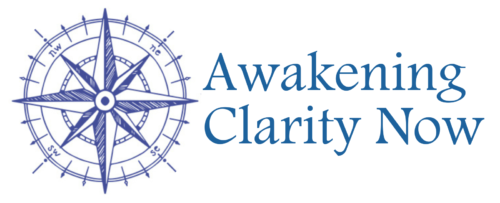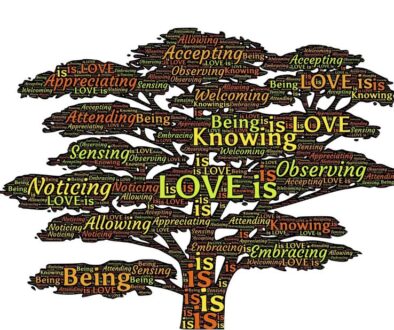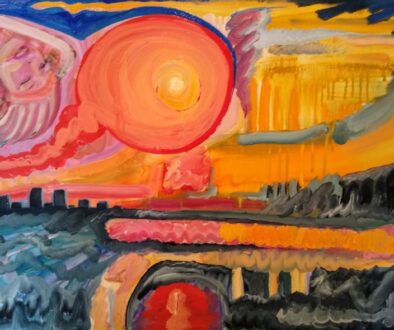Modern Cave Dwellers by Kathleen Sutherland

Spiritual seekers today often disparage the ascetic, renunciate traditions of monastic life or cave dwelling. They contend that such a path may have been tenable in the past, but these days we have so many obligations; we are too busy with worldly affairs. Cave dwelling isn’t an option, they say ruefully, and then dismiss it as misguided: It’s taking the easy way out. It’s an escape from the complications and challenges of life. It would be easy to be spiritual, living away from society. We moderns must awaken amid the hubbub. We do not shirk responsibilities nor shun the phenomenal world, and can do much good to change its course if we remain engaged, abiding as awakeness.
These points in favor of living as awakeness in the midst of society are well taken. But the renunciate’s path is also worthy. Those who dismiss it as escapism do so without having considered what that choice entails.
Cave dwelling is not easy. Much is relinquished: social, family and work life. It is dangerous. You’re exposed to the elements; food may be scarce. Recently I heard of a Himalayan cave dweller who fell and injured his back. He was alone and helpless, and would have died, but for chance discovery and rescue. Cave dwelling is by no means a simple, slacker sort of life. It demands the utmost spiritual dedication and courage. Monastic life may be a little more secure and comfortable, but it, too, takes great dedication and sacrifice.
Apart from the physical challenges, the solitary ascetic is also subject to the vicissitudes of the mind. Alone, he is vulnerable to attacks by demons, whether they be perceived as traditional meddlesome spirits, aiming to throw him off track, or as his own psychology launching an assault. He is walking the razor’s edge between enlightenment and madness. (“He” because traditionally this was not a path open to women.)
Abiding as awareness in the midst of a busy, secular life is wonderful; it’s in the true yogic tradition of the Bhagavad Gita. It is certainly an easier path to incorporate into the typical modern life, and for that reason, more common. But that does not make it the best or only way.
Respect for the renunciate’s path matters because it is not merely a relic of the past, with just a few remaining practitioners in the Himalayas or the Zhongnan mountains of central China. On the contrary, we are witnessing a renaissance of the phenomenon: the modern cave dweller.
Wealth and technology enable, for better or worse, many of us to live in relative solitude. In the United States, the number of people living alone has been steadily increasing over the past century, with about 30% doing so today (vs. 5% in 1920).* Even living with others in a modern, spacious home, we may still have plenty of solitude. With all the shopping available online and delivery options, we run fewer daily errands, which minimizes casual interactions. Many work from home. Families are less enmeshed these days, too. You probably aren’t living near a gaggle of cousins, aunts and uncles, and most likely won’t be taking in your elderly parents when they need on-site care.
A modern person can thus be quite shielded from the distractions of the marketplace and social life. This can foster alienation, but it can also be embraced as a unique opportunity to be an ascetic, with time and energy to focus on spiritual life. We can even connect and participate in online sanghas. This arrangement parallels the traditional monastic life: plenty of solitude, with time for contemplation and study, but with connection and teaching from others doing the same.
Being awake in the midst of a busy life is marvelous and rewarding, but a quiet, more isolated abidance can be magical, too. If you are living as a modern ascetic, recognize this and make the most of it.
Don’t be ashamed of your isolation, or consider it an escape or easy living. Acknowledge its challenges, being aware of the ego’s capacity to lead the solitary seeker astray. But also value and pursue this opportunity to study and deepen your spirituality without undue distraction. This is all the more true today as we can dwell in relative comfort and security.
Modern cave dwellers are upholding a noble lineage. If you are of them, honor that tradition and yourself in your exploration of the divine, of What Is. Embrace your inner caveman or woman. She is a powerful force.
Kathleen Sutherland is a student of The Living Method and is editor of ACN. She lives in Iowa.
* The Washington Post, More Americans living alone, census says. Tim Henderson, September 28, 2014.





July 25, 2018 @ 6:42 pm
Nice post Kathleen…Thank you…❣️
“The great way has no gate…A thousand pathways…Passing through…You walk the universe alone”…Basho
July 26, 2018 @ 2:19 pm
Hi Kathleen,
Very nice post! Are you considering becoming a cave dweller or monastic? This reminds me of a time, oh, about 20 years ago (much prior to awakening), in which I spent a month in a Zen monastery. I found the experience to be both wonderful and extremely challenging. After the month was over, I was having a discussion with one of the monks that went something like this:
Me: “Wow. I don’t know how you do it. You’re up at 4:30 every morning or 3:00 during retreats. You sit long hours. You have no time for yourself. You don’t get to leave the monastery grounds. Your life seems so structured!”
Him: “Honestly, I don’t know how you do it. You have to worry about your mortgage, job, bills, etc.. You are beholden to others, such as your employer, your spouse, your kids. I cannot imagine living anymore with that level of stress. Me, I get to wake up early and see the stars. I get to sit in silence for hours and just listen to what’s going on, such as the birds chirping outside. I am well fed. I have a roof over my head and a bed to sleep in. I get to hang out with like minded people. And, having no time for myself is not a problem because there is no self!”
July 26, 2018 @ 4:24 pm
Thanks, Vinji. I love the monk’s response! I already consider myself a modern cave dweller. Chris and I have no children and are not close to our families. We don’t have much social life. We don’t travel. We earn a little money through his online business, and otherwise try to be as consciously awake as possible. Although we used to attend Zen “sesshins” (weekend meditation retreats) at a nearby monastery, my health precludes that sort of austerity today, and Chris and I both find nonduality more conducive to abiding in awareness.
July 26, 2018 @ 6:52 pm
Very cool! Sure does add lot of light to the cave we share (and hospitality, thanks for pointing out we are sharing our cave)
October 18, 2018 @ 3:10 am
Thank you for this post! This is exactly what I needed to hear! I’ve been a modern cave dweller at home for the past two and a half years and it can be a challenge that most people don’t understand it. From the outside I’m sure it looks like I’ve lost all motivation or something. When I do meet with people and they ask what I’ve been up to it’s a difficult question to answer and one that I don’t always feel comfortable being honest about simply because I don’t feel like trying to explain myself. I can see, however, that when this phase brings itself to an end I’ll likely be much more able to be of real use to society than I ever could have been otherwise. For me this phase has been a bit like a training ground – learning how to abide in a new way of being and it’s been incredibly challenging and at the same time rich, fascinating and exciting!
October 18, 2018 @ 9:09 am
Ryan, you express my sentiments precisely. The past five years, I’ve been mostly home bound due to health issues. From the outside, it could seem a sad life, but I have had more spiritual growth than ever in the past. Some undertake asceticism willingly, and others have it imposed upon them. If it is imposed upon you by circumstances, make the most of it!
October 18, 2018 @ 11:19 am
You are very welcome, Ryan. Thank you for the note.♥